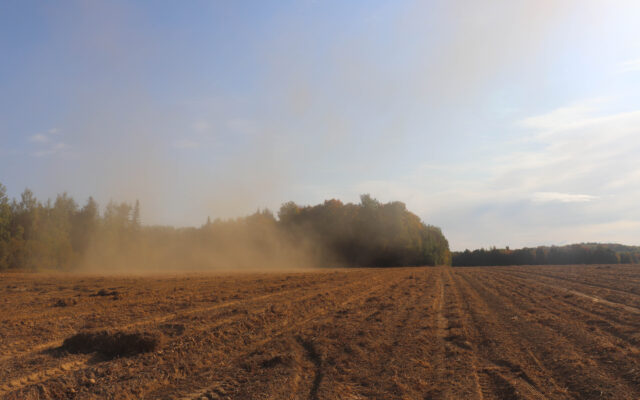
Northern Maine is still abnormally dry after a wet July
By Alexander MacDougall, Houlton Pioneer Times Staff
Northern Maine residents may have noticed more rain in the month of July compared with the scorching heat of last June, but roughly three quarters of the state remains either abnormally dry or in drought conditions, according to the U.S. Drought Monitor.
Maine’s Drought Task Force, which consists of state, federal and private organizations that monitor drought in the state, met virtually on July 30 to discuss dry conditions in the state. While Maine saw a marked increase in rain over the past month, much of it was due to fast-moving heavy rain storms. That kind of rain tends to not be absorbed as well as steady, lighter precipitation.
“Perspective is important when it comes to the drought,” said Nick Stasulis, who serves as co-chair of the Drought Task Force. “Folks in coastal and eastern Maine may not think there’s an issue as there’s been improvement in streamflow conditions due to recent rain, but fast-moving storms are generally not conducive to groundwater recharge.”
The U.S. Drought Monitor currently lists 72 percent of the state as being at least in the lowest drought category of abnormally dry, with moderate to severe drought occurring in most of Piscataquis, Somerset, Franklin and Oxford counties.
It’s an improvement since the beginning of July, when 100 percent of the state was at least abnormally dry and 70 percent was in moderate drought.
For the Bangor area, the city recorded its wettest July on record with 7.67 inches. But the city remains 3.5 inches below normal for the year in terms of rainfall, having also recorded it’s second-driest June on record, according to James Sinko, a meteorologist at the National Weather Service in Caribou.
“We had that very dry June, we made up quite a bit in July, but how much did that really get absorbed?” Sinko said. “It looks like some of it did, but not a lot of it.”
For Aroostook County, the area south of Presque Isle remains unaffected by drought, although abnormally dry conditions exist in the rest of the county. These conditions have the potential to stunt crop growth and cause gardens to wilt, according to the Drought Monitor.
Rain from heavier storms in July have also been less helpful to the soil, according to Sinko.
“You could see the water just running right off of the potato fields and the broccoli fields,” he said. “That’s a great visual example of how it just doesn’t absorb.”
Some of Maine’s most prominent waterways, such as the Penobscot, Pisctaquis and St. John rivers also continue to be at very low levels. On Aug. 2, the U.S. Geological Survey recorded levels at water monitoring stations along these three rivers that ranked in the bottom 10th percentile of all levels recorded for that date.
It marks the second year in a row that rivers in northern Maine find themselves at very low levels, after a historic drought season last summer that triggered emergency funding for farmers.
“A lot of them aren’t at the very low levels that we were at last year, where we were at record historic lows,” Sinko said. “These aren’t at that level, but they are running very, very low for this year.”